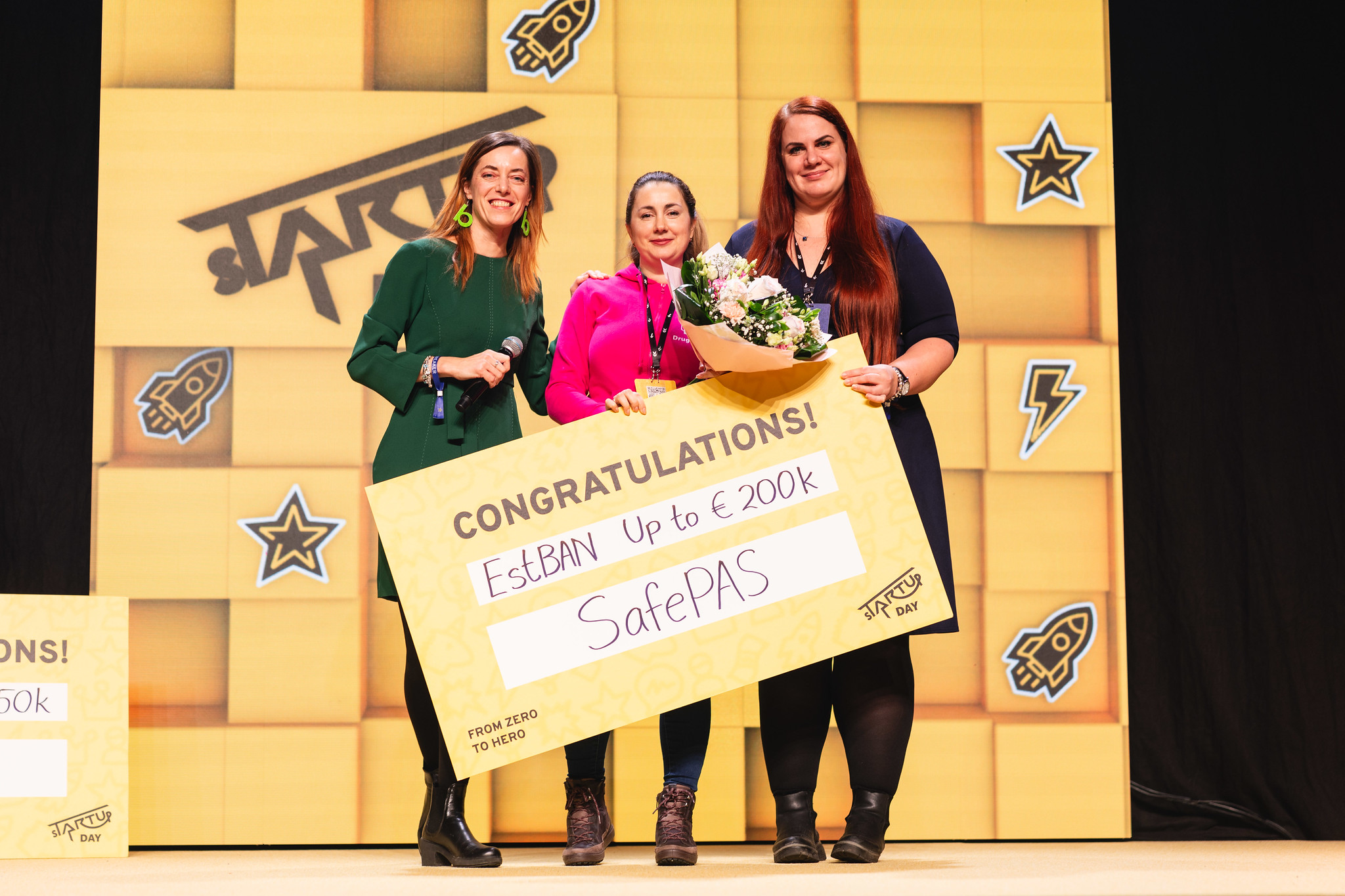
Jekaterina Mazina: SafePAS’s Journey Ten Months After Winning sTARTUp Pitching 2025
Ten months after winning sTARTUp Pitching 2025, deep-tech company SafePAS, led by Jekaterina Mazina, continues its mission to make lab-grade testing accessible anywhere. SafePAS develops portable diagnostic devices that deliver instant, laboratory-accurate results for both drug detection and soil analysis — at a fraction of the cost of traditional laboratory tests. Their flagship products, Drug Hunter and SMAGRY, are used in law enforcement and agriculture, enabling on-site decision-making with accuracy and speed.
In this interview, Jekaterina shares SafePAS’s journey after the major victory—from navigating complex investment processes and expanding partnerships to finding balance in the demanding life of a deep-tech founder.
Applications for sTARTUp Pitching are open! Taking place as part of sTARTUp Day 2026, the competition seeks the brightest early-stage startups looking to accelerate their fundraising goals for 2026. With up to €200,000 in investments, equity-free cash, legal support, and cloud service credits up for grabs, this is your chance to take the stage and shine. If you have a strong team and a live product, it’s time to show the world what you’re building. Applications are open until November 7, 2025.
Before that, we had taken part in other pitching competitions, using those opportunities to talk about our idea and what we were building. This meant that by the time we reached sTARTUp Pitching, our company already had some visibility — we weren’t a completely new name, and investors were somewhat familiar with us.
My advice to others is to do your homework before applying — connect with investors in advance so they already know who you are, what your team does, and what you’ve achieved. This builds trust and credibility in both the company and the team.
Based on that feedback, we refined our pitch step by step over several years. We also competed in startup events in Latvia, Lithuania, and elsewhere, always watching how others presented, what they emphasized, what investors paid attention to, and what really mattered — such as how much funding they were seeking and what milestones they had already achieved.
My advice is to watch others before stepping on stage yourself, especially those who reach the top ten. Analyze why they made it there — what they emphasized, what achievements they highlighted, and how they structured their pitch, not just in content but also visually. A pitch deck must be clean and simple because no one reads long text on stage.
Accelerators are extremely valuable because you gain both information and feedback from other founders. Over the years, we continuously refined and simplified our pitch, learning something new each time — and applying that knowledge to the next presentation. That experience and confidence ultimately paid off at sTARTUp Pitching.
The whole process lasted from January to May. We initially thought it would go faster, but in reality, the documents are highly detailed and legally complex. Although Startup Estonia’s standard contracts are created and reviewed by lawyers, it’s still difficult to fully understand them without professional help — every clause needs careful consideration, as it defines future obligations for the company.
We were lucky to be in the Beamline accelerator at the time and to have received Sorainen and Triniti legal support awards at sTARTUp Pitching. Their professional advice helped us interpret and negotiate the contracts effectively. It was essential to understand that you don’t have to accept everything as-is — many clauses can be adjusted or removed if they don’t fit your company’s situation. That experience taught us a lot about the investment process and gave us the confidence to stand up for our own interests.
Our first round also included strategic investors such as Securetec Detektions-Systeme AG from Germany and Lanmer OÜ from Estonia, as well as venture capital funds. It’s crucial for startups to evaluate who is an angel investor and who represents venture capital — and to understand how long each type of investor plans to stay involved.
Our investors have provided guidance and reviewed our activities. They’ve also advised us on communication practices — how to keep investors informed and which updates to send regularly. We plan to meet monthly, send newsletters about our progress and challenges, and ask for help as we enter new markets. The communication is direct and easy — I can write or call them anytime for advice or feedback.
However, the situation has improved in recent years. There are now more venture funds willing to invest in hardware and software solutions. Still, it’s essential to thoroughly research which of them truly understand deep tech and are ready to commit to the sector.
For us, finding strategic partners operating in the same field — those who understand our products and mission — has been key. But finding such partners takes time. They need relevant experience and must be willing to contribute not just financially but also with their expertise, network, and advice.
This has been our goal for years, especially through our collaboration with the Estonian Police, as we’ve been looking for ways to develop and fund these products together. Since securing national funding for such projects is challenging, we turned to European Union programs—and finally succeeded.
Our mission is to help clients, such as law enforcement agencies, work faster and more efficiently with our devices. That’s our dream — to provide technology that makes society safer and improves the quality of life for everyone.
Right now, my workload is intense — with a new project, sales processes, and internal development all happening at once. I can’t maintain perfect balance yet, but my goal is to achieve it within a year and manage it consciously.
One practical piece of advice I recently received and try to follow is mindful calendar management. I used to schedule meetings back-to-back, but now I leave 15–30 minutes between each one. This time helps me recharge, organize my thoughts, and prepare for the next discussion. Even a short break gives you breathing space and keeps your mind clear — it’s a small but essential step toward balance.
sTARTUp Day will take place for the 10th time on January 29–30, 2026, at the Estonian National Museum, bringing together thought leaders, founders, and investors from the entrepreneurial world — offering inspiring stories, valuable connections, and new ideas.
Applications for sTARTUp Pitching are open! Taking place as part of sTARTUp Day 2026, the competition seeks the brightest early-stage startups looking to accelerate their fundraising goals for 2026. With up to €200,000 in investments, equity-free cash, legal support, and cloud service credits up for grabs, this is your chance to take the stage and shine. If you have a strong team and a live product, it’s time to show the world what you’re building. Applications are open until November 7, 2025.
How did you end up participating in sTARTUp Pitching, and why did your team decide to apply?
We had participated in sTARTUp Day for several years, but we hadn’t applied before — we were observing and assessing whether we were ready to take that next step. We wanted to be sure that everything investors look for was already in place. Once we realized we met those criteria, we decided to apply and give it a try.Before that, we had taken part in other pitching competitions, using those opportunities to talk about our idea and what we were building. This meant that by the time we reached sTARTUp Pitching, our company already had some visibility — we weren’t a completely new name, and investors were somewhat familiar with us.
My advice to others is to do your homework before applying — connect with investors in advance so they already know who you are, what your team does, and what you’ve achieved. This builds trust and credibility in both the company and the team.
Do you remember the moment you felt your pitch really resonated with the jury or the audience? How would you advise other scientists or deep-tech founders to prepare for a similar competition?
We had participated in various accelerators, which gave us the background and experience we needed. For example, Prototron, Health Technology Accelerator, and Beamline, where we received plenty of feedback on our pitching — how to improve it, what to include, where to place emphasis, and what matters most to investors.Based on that feedback, we refined our pitch step by step over several years. We also competed in startup events in Latvia, Lithuania, and elsewhere, always watching how others presented, what they emphasized, what investors paid attention to, and what really mattered — such as how much funding they were seeking and what milestones they had already achieved.
My advice is to watch others before stepping on stage yourself, especially those who reach the top ten. Analyze why they made it there — what they emphasized, what achievements they highlighted, and how they structured their pitch, not just in content but also visually. A pitch deck must be clean and simple because no one reads long text on stage.
Accelerators are extremely valuable because you gain both information and feedback from other founders. Over the years, we continuously refined and simplified our pitch, learning something new each time — and applying that knowledge to the next presentation. That experience and confidence ultimately paid off at sTARTUp Pitching.
What have you been working on in the past ten months, and what have been your biggest steps since the competition?
After sTARTUp Pitching, our main focus was finalizing investment agreements. That process turned out to be far more complex and time-consuming than expected, as it required drafting and aligning a large number of documents and clarifying every condition. The real work began only after the victory — that’s when the actual negotiations started.The whole process lasted from January to May. We initially thought it would go faster, but in reality, the documents are highly detailed and legally complex. Although Startup Estonia’s standard contracts are created and reviewed by lawyers, it’s still difficult to fully understand them without professional help — every clause needs careful consideration, as it defines future obligations for the company.
We were lucky to be in the Beamline accelerator at the time and to have received Sorainen and Triniti legal support awards at sTARTUp Pitching. Their professional advice helped us interpret and negotiate the contracts effectively. It was essential to understand that you don’t have to accept everything as-is — many clauses can be adjusted or removed if they don’t fit your company’s situation. That experience taught us a lot about the investment process and gave us the confidence to stand up for our own interests.
You received investments through EstBAN and BSV Ventures (formerly Baltic Sandbox Ventures). What has been the greatest value of these partnerships?
We didn’t want investors who only bring money — we wanted those who could also contribute strategically. We carefully chose who to include in our syndicate, assessing whether each potential investor could add real value. During the funding round, several partners joined us, and there was more interest than we could accommodate, so we had to postpone some investors to the next round.Our first round also included strategic investors such as Securetec Detektions-Systeme AG from Germany and Lanmer OÜ from Estonia, as well as venture capital funds. It’s crucial for startups to evaluate who is an angel investor and who represents venture capital — and to understand how long each type of investor plans to stay involved.
Our investors have provided guidance and reviewed our activities. They’ve also advised us on communication practices — how to keep investors informed and which updates to send regularly. We plan to meet monthly, send newsletters about our progress and challenges, and ask for help as we enter new markets. The communication is direct and easy — I can write or call them anytime for advice or feedback.
What have been the biggest challenges in finding investors in the deep-tech field — and how have you overcome them?
Finding investors in deep tech is challenging, mainly because it’s a highly technical, specialized field. When your clients are government agencies, it becomes even more complicated — reaching them takes time, and the procedures are slow and complex.However, the situation has improved in recent years. There are now more venture funds willing to invest in hardware and software solutions. Still, it’s essential to thoroughly research which of them truly understand deep tech and are ready to commit to the sector.
For us, finding strategic partners operating in the same field — those who understand our products and mission — has been key. But finding such partners takes time. They need relevant experience and must be willing to contribute not just financially but also with their expertise, network, and advice.
What is the big dream that SafePAS is working toward today?
Our biggest dream is to help our clients achieve their goals and make society safer. Recently, we received a €2.5 million grant, which is a huge milestone for us. It enables us to develop our products further — making them smaller, vehicle-compatible, and even more user-friendly.This has been our goal for years, especially through our collaboration with the Estonian Police, as we’ve been looking for ways to develop and fund these products together. Since securing national funding for such projects is challenging, we turned to European Union programs—and finally succeeded.
Our mission is to help clients, such as law enforcement agencies, work faster and more efficiently with our devices. That’s our dream — to provide technology that makes society safer and improves the quality of life for everyone.
What does a good life mean to you?
For me, a good life means finding balance between work and family — it’s the foundation of happiness and satisfaction. When you run a small company, you often have to do everything yourself and even use personal resources for the business. But at some point, you need to start setting priorities and delegating tasks to create space and time for yourself. If you can’t even find one hour a day for yourself, you’re already on the edge of burnout.Right now, my workload is intense — with a new project, sales processes, and internal development all happening at once. I can’t maintain perfect balance yet, but my goal is to achieve it within a year and manage it consciously.
One practical piece of advice I recently received and try to follow is mindful calendar management. I used to schedule meetings back-to-back, but now I leave 15–30 minutes between each one. This time helps me recharge, organize my thoughts, and prepare for the next discussion. Even a short break gives you breathing space and keeps your mind clear — it’s a small but essential step toward balance.
sTARTUp Day will take place for the 10th time on January 29–30, 2026, at the Estonian National Museum, bringing together thought leaders, founders, and investors from the entrepreneurial world — offering inspiring stories, valuable connections, and new ideas.
Articles you might also like:

sTARTUp Day Classics: Kaarel Kotkas on Y Combinator and Growing as Hell
22.10.2025
In this episode of the sTARTUp Day Podcast, we revisit a standout keynote from sTARTUp Day 2019. Kaarel Kotkas, the founder of...
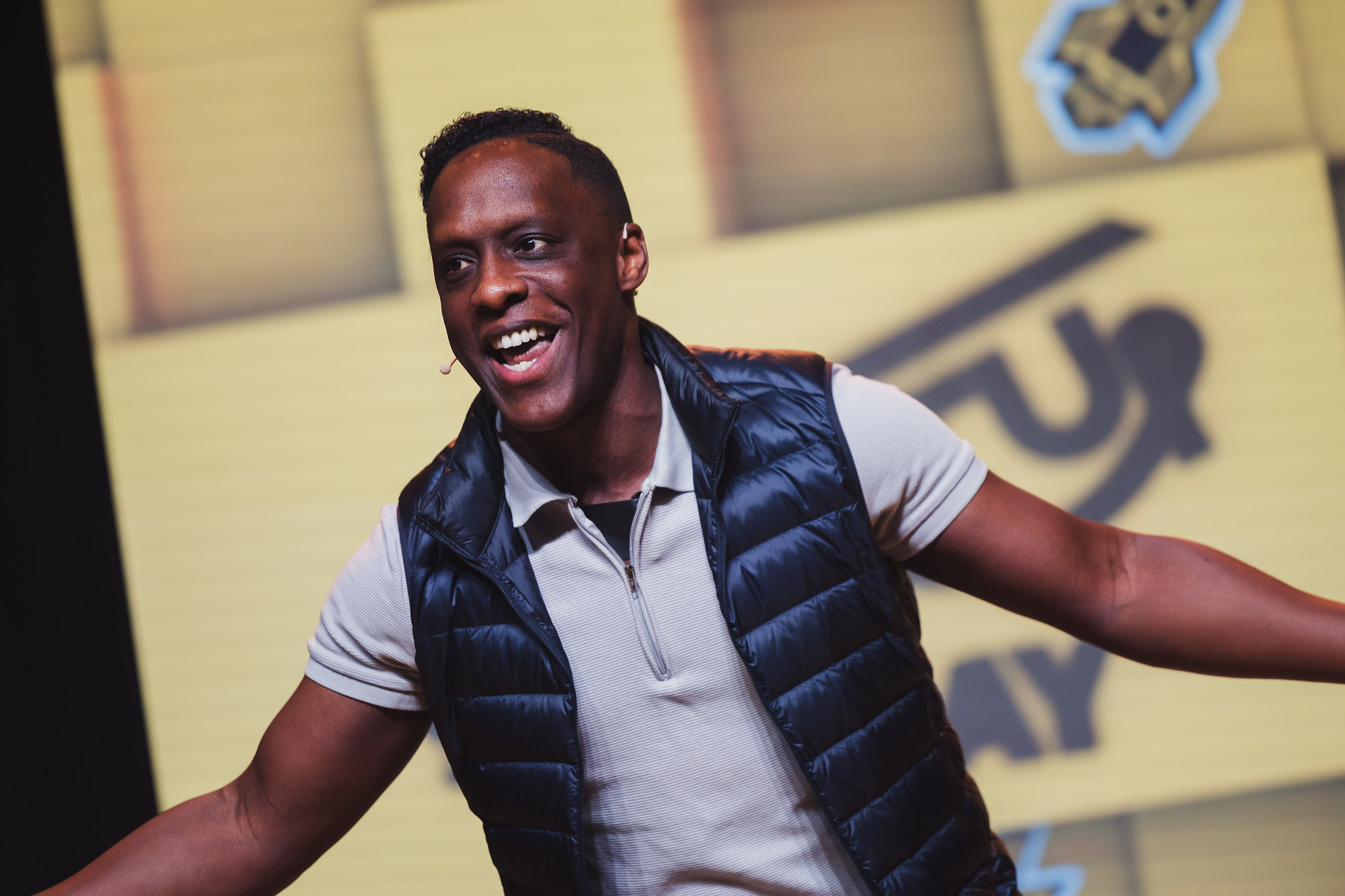
Daniel Lewis: “The secret to succeeding in business is in the first two letters—BU—be you.”
30.06.2025
At sTARTUp Day, the room lit up as Daniel Lewis took the stage—not just with stories, but with the energy of someone...
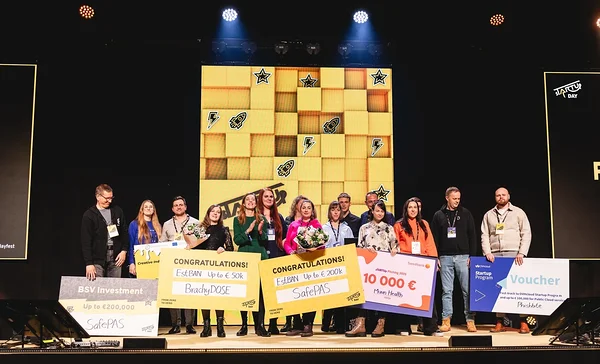
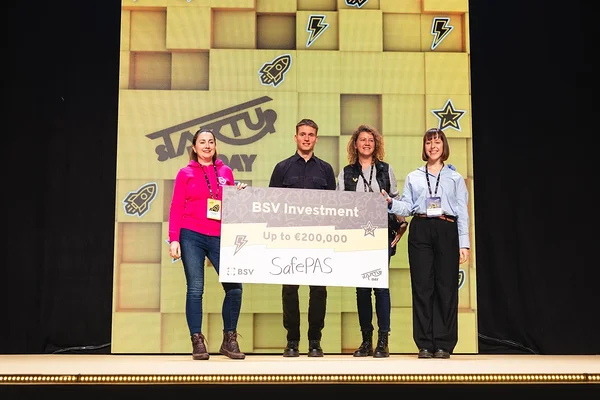
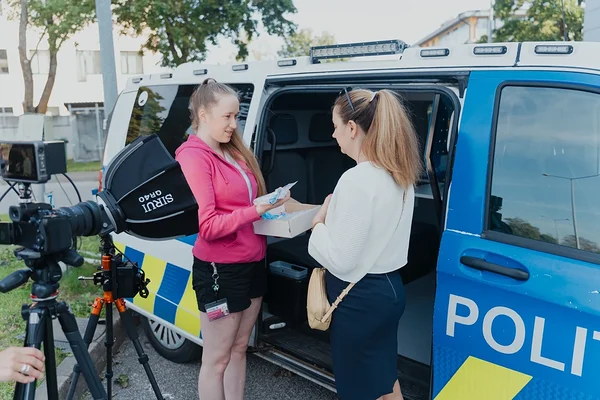
_block.webp)